Discover 11 hidden attractions, cool sights, and unusual things to do in Lewes (United States). Don't miss out on these must-see attractions: Zwaanendael Museum, Overfalls, and Lewes and Rehoboth Canal. Also, be sure to include Ryves Holt House in your itinerary.
Below, you can find the list of the most amazing places you should visit in Lewes (Delaware).
Table of Contents
Zwaanendael Museum

Museum in Lewes, Delaware. In Lewes, Delaware the Zwaanendael Museum was created to honor the 300th anniversary of Delaware's first European settlement, Zwaanendael, founded 1631. The museum models the former City Hall in Hoorn, Netherlands. It has 17th century Dutch elements such as stepped facade gable, terra cotta roof tiles, carved stonework, and decorated shutters. The top of the building's front features a statue of David Pietersen de Vries, leader of the expedition that founded Swanendael.
The museum's exhibits represent the history of Sussex County by revealing the history of those who lived in Delaware's southeastern coast. Exhibits include local history, shipwrecks and lighthouses, Cape Henlopen Lighthouse, the bombardment of Lewes by the British in the War of 1812, pilots of the Delaware River and Bay, and the ever-changing Delaware coastline.[1]
Overfalls
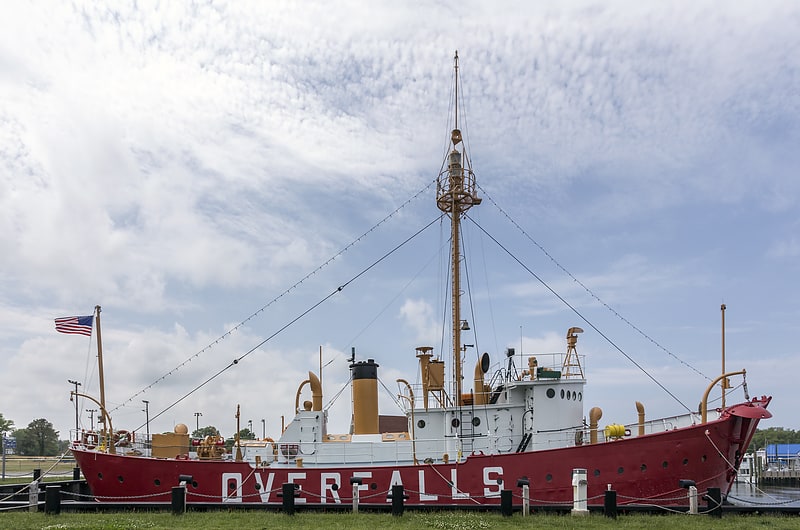
Museum in Lewes, Delaware. Lightship Overfalls was the last lightvessel constructed for the United States Lighthouse Service before the Service became part of the United States Coast Guard. She is currently preserved in Lewes, Delaware as a museum ship.[2]
Address: 219 Pilottown Rd, Lewes
Lewes and Rehoboth Canal
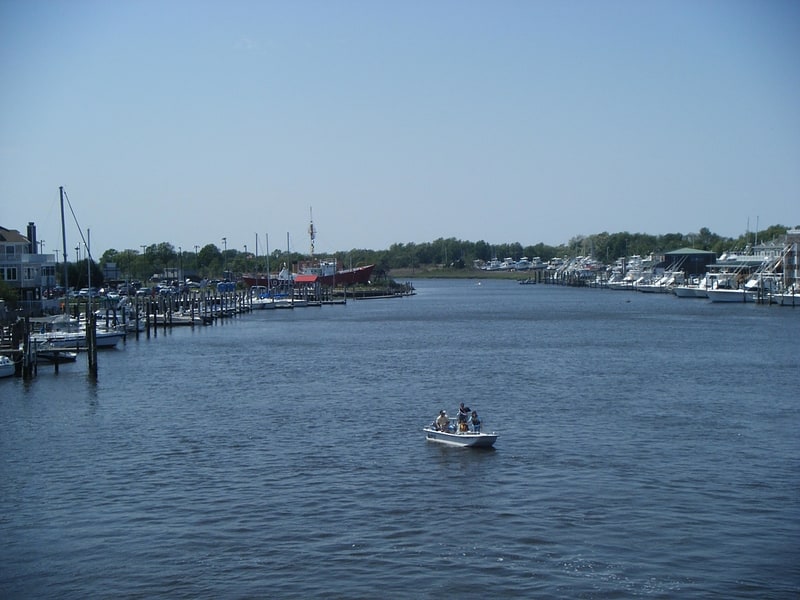
Canal in Delaware. The Lewes and Rehoboth Canal is a canal in Sussex County, Delaware, which connects the Broadkill River and the Delaware Bay to Rehoboth Bay. It forms a portion of the Intracoastal Waterway.[3]
Ryves Holt House

Building in Lewes, Delaware. Ryves Holt House is purportedly the oldest surviving house in the U.S. state of Delaware. It is located at 218 Second Street in Lewes, Delaware.
The building, which has been dated to 1665 using dendrochronology, served as one of the earliest inns in the region. It was run for a time by Philip Russell, who was "recorded as a cupbearer to William Penn". After coming to "Port Lewes" in 1721, Ryves Holt, the first Chief Justice of Sussex County, purchased the house. The Lewes Historical Society currently owns and operates the building. On December 30, 2014, the Ryves Holt House was added to the First State National Historical Park.[4]
Lewes Public Library

Library
Address: 11 Adams Ave, 19958 Lewes
Cool Spring Presbyterian Church

Church building in Sussex County, Delaware. Cool Spring Presbyterian Church is a historic Presbyterian church building located near Lewes, Sussex County, Delaware. It was built in 1854, and is on the site of two previous church buildings that served the congregation dating back to its establishment in 1726. It is a one-story, frame structure, three bays deep, in a rural Greek Revival style. It sits on a brick foundation and has a gable roof. It features a simple pedimented portico supported by two Doric order columns. The churchyard was officially granted to the congregation in 1737 by Governor Thomas Penn.
It was added to the National Register of Historic Places in 1976.[5]
Lewes Presbyterian Church
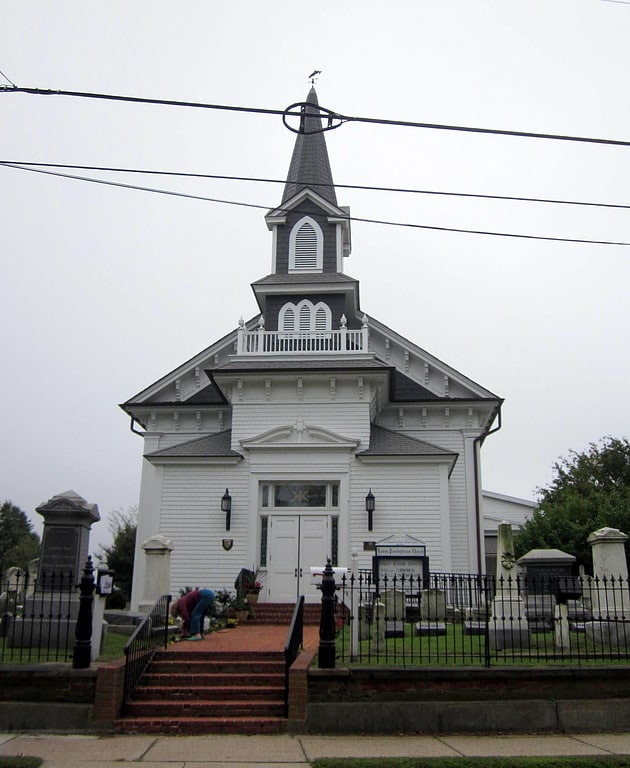
Church building in Lewes, Delaware. Lewes Presbyterian Church is a historic Presbyterian church building located at 100 Kings Highway in Lewes, Sussex County, Delaware. It was built in 1832, as a frame meeting house measuring 45 feet by 37 feet. In 1869, the church was renovated to add a number of a Gothic Revival style features and the addition of a chancel with Gothic windows. In 1886–1887, the tower and belfry were added and two massive Corinthian order columns were added to the interior. In 1931, the church acquired its Colonial Revival style front door.
The Lewes Presbyterian congregation was organized in 1692, and are the second oldest Presbyterian congregation in Delaware. The church is located on the site of the original 1727 brick church, which burned in 1871. Burials in the adjacent churchyard include two Delaware governors David Hall (1752-1817) and Ebe W. Tunnell (1844-1917) and congressman Robert G. Houston (1867-1946) and John W. Houston (1814-1896).
It was added to the National Register of Historic Places in 1977.
Lewes Presbyterian Church is a member of the denomination: The Covenant Order of Evangelicals, also known as E.C.O. It is also a member of Heritage Presbytery.[6]
Pagan Creek Dike
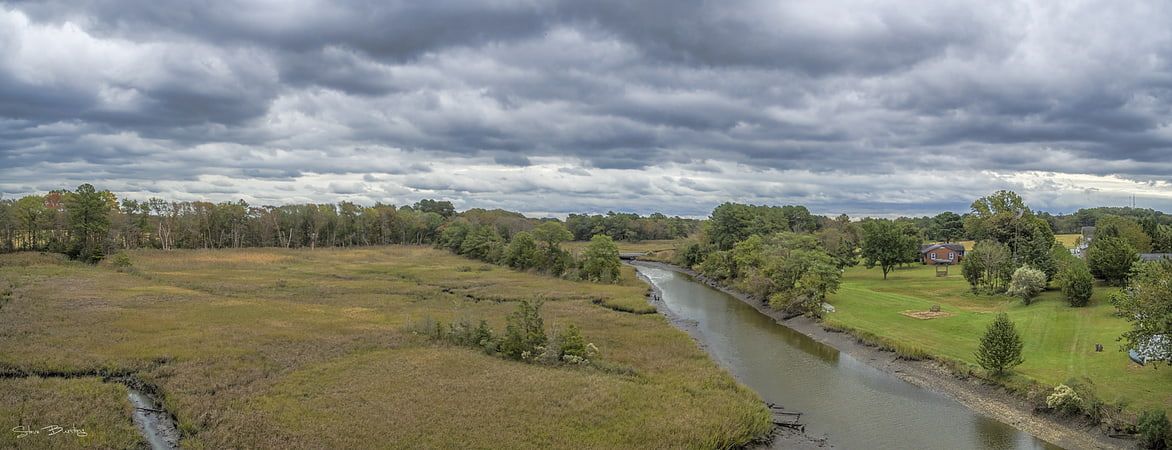
Pagan Creek Dike is a historic causeway located at Lewes, Sussex County, Delaware. It is about 700 feet long, nine to ten feet wide at the top, constructed of clay and loam piled atop a sand footing, which rests on marsh mud. In some places, the dike still rises about two feet above the level of the adjacent marsh. It is dated to the mid- to late-17th century, and is one of the oldest surviving road structures in Delaware. It was apparently built by the Dutch settlers to connect the Dutch West India Company fort with the hinterland beyond Pagan Creek.
Pagan Creek was the earliest known name for this body of water. It was later known as "Canarikill", which translates roughly as Canary Creek. The numerous Goldfinches in the area reminded the Dutch of canaries, hence the name. Kill means creek, basically, in Dutch. Over time Canarikill became localized as Canarical, a name that persisted well into the mid to later 1900s by some locals. Eventually the name evolved to Canary Creek, which is present on most modern maps.
The timbers of the dike (dyke), better thought of as a 'causeway', are in remarkably good condition and visible at low tide approximately 300 yards west of the bridge over New Road. The entire reach of the dike is on private property. One can see the timbers at low tide by canoe or kayak, but even so the waters in the area are still privately owned.
It was added to the National Register of Historic Places in 1973.[7]
De Vries Palisade
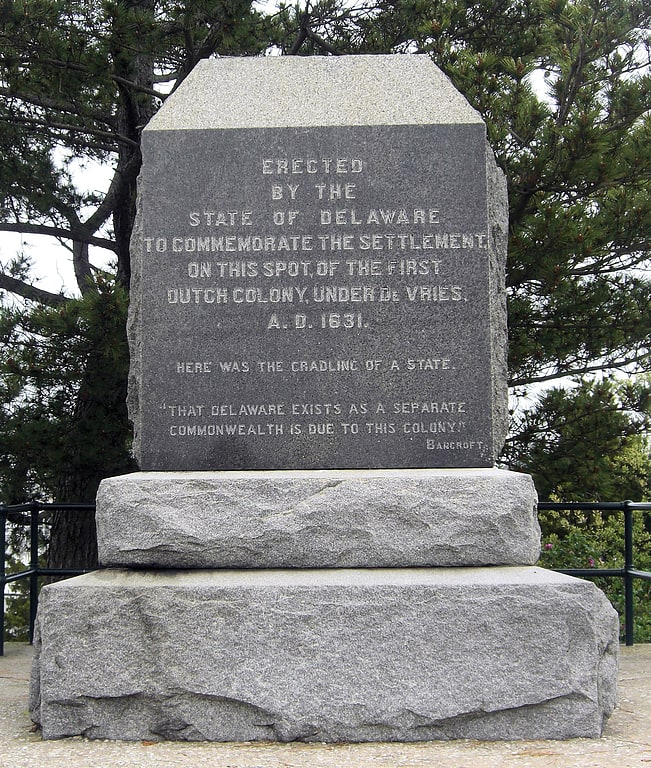
Archaeological site in Sussex County, Delaware. De Vries Palisade, also known as DeVries Palisade of 1631, is an archaeological site located at Lewes, Sussex County, Delaware. It is the site of the Zwaanendael Colony, the first permanent European presence on the Delaware Bay in 1631, settled by a group of settlers under David Pietersz. de Vries. The settlers landed near this spot to form a whale hunting station and agricultural settlement. A monument was erected on the site; it was dedicated on September 22, 1909.
It was listed on the National Register of Historic Places in 1972.[8]
Coleman House

Coleman House is a historic home located at Lewes, Sussex County, Delaware. It dates to about 1815, and consists of a 2-story, three bay, frame main section with 1+1⁄2-story, frame wing. Both sections are sheathed in cypress and have gable roofs. It is an outstanding example of the early-19th-century rural architecture once common in the Lewes area.
It was added to the National Register of Historic Places in 1977.[9]
Col. David Hall House
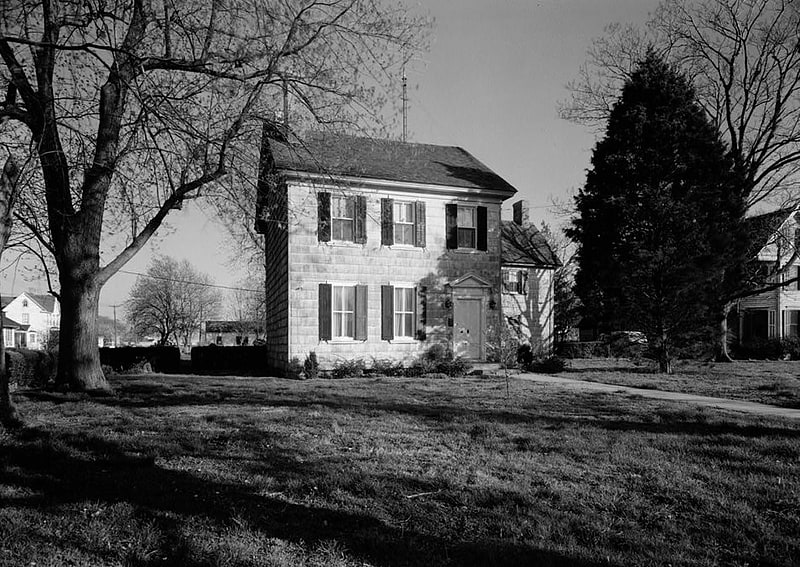
Col. David Hall House is a historic home located at Lewes, Sussex County, Delaware. The main house dates to about 1780, and is a 2+1⁄2-story, three-bay, frame structure. A lower 2+1⁄2-story wing was added about 1805. The main house is sheathed in its original cypress shingles and the wing in cedar shakes. It was the home of Colonel David Hall, who served as Governor of Delaware.
It was added to the National Register of Historic Places in 1976.[10]